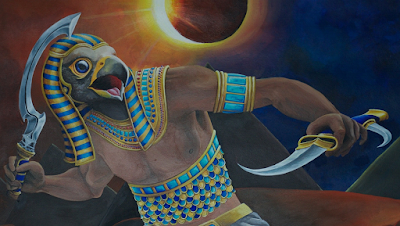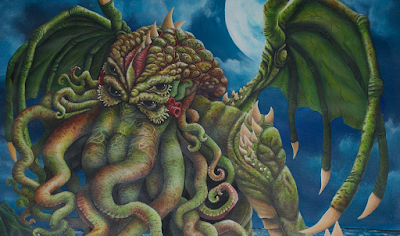Oct 24, 2018
The Factions of Mythos of Legends
Each miniature that is created will belong to one or more factions within the Mythos of Legends system. This is to help differentiate and create diverse and rich gaming experiences which revolve around a theme or narrative, but practically it also helps maintain a degree of fairness and balance across the system and make for a more enjoyable experience for all. Each faction has been built upon pre-existing myths, stories and legends that have developed across the millennia, making the collecting and gaming experience recognisable and exciting to all who wish to embrace the Mythos of Legends. In this section, we hope to provide an overview of the five factions we wish to unlock over the course of the Kickstarter campaign. Objectively, we plan to start with two – Ancient Rome and Ancient Greece – with the target of unlocking the rest through Kickstarter pledges.
Each faction has been designed to offer a variety of play styles within the army faction rules. These rules will be available for free on this website upon the completion of the Kickstarter fulfilment and the release of backers miniatures, but they have already been written to ensure all backers will receive a fantastic gaming experience as soon as possible. We’ll be discussing how each faction is different during the Kickstarter campaign and exploring the system rules in greater depth, so watch this space for lots more exciting information.
To find out more about the Kickstarter, please click the link below:
Ancient Greece
It is a time of great heroes and legendary monsters, demigods and great quests. When the Lords of Olympus raise the call to arms, the Greek City States answer. The indomitable heroes of the age stride to war alongside the beasts that they would normally find themselves slaying, alongside massed ranks of spear and pike.
The Greek army takes the field built around solid blocks of defensive infantry, the Hoplites and Phalangites, who present a deadly wall of pikes to their enemy. They are ably supported by archers, skirmishers and cavalry which can harass the enemy’s flanks and defend those of their own unwieldy phalanxes.
The heart of the army, though, is the legendary units. Powerful figures which stride out of legend to lead their mortal brethren. Heroes of the epic tales such as Achilles, Odysseus and Heracles will strike fear into the heart of any enemy, and the likes of the Gorgons, Cyclops and Hydra can tear through mortals with barely a pause. They are the hammer, to the anvil of the phalanxes.
Given the focus of the Greek list on its legends, the Greek player can take more legendary units than any other faction. And given what they can do, why wouldn’t you? This is a faction for the player who wants to see their legendary heroes striding the board, tearing apart the enemy single-handed. Who can stand in their way?
Ancient Rome
Rome stands as a bastion of mankind against the supernatural, blessed, damned and divine powers of the world. Not for them the beasts or demigods within their ranks. No, a Roman army works on flesh and blood, iron discipline, inspired generalship and cold, hard steel. No matter the origin, there is little that can take on a legion and emerge triumphant. The Roman people – and gods – will it to be so.
Roman units can come in two flavours – the Hastati, Principes, Triarii model of the Republican legions or the later legions of the Empire following the reforms of Gaius Marius. Whichever troops the player uses, the citizen soldiers of Rome remain versatile and steadfast.
The Roman army can easily field more units of high-quality infantry than other factions, armed with versatile swords and javelins to respond to any foe. They can pass their generals’ orders along the line, giving the Roman player an unprecedented degree of tactical flexibility when compared with other factions.
Backing up the legions are the auxiliaries, a wide array of useful support troops able to plug any skill gaps that the legions lack, and a selection of powerful war machines capable of reaching out and striking the enemy from afar.
The Roman faction is best suited for the player who isn’t interested in demigods or monsters, but who would rather field large groups of quality infantry and win the day through tactical flexibility, discipline and the strength of a legionary’s sword arm.
Ancient Egypt
Pharoah’s will be done.
The Egyptian army is one based around its king, the living God who rules over the lives and souls of all of his subjects. The Pharoah takes to the battlefield in glory, and his people follow.
The Egyptian army follows a unique mechanic, the Balance of Maat. Egyptian priests can call on a wide variety of powerful spells and rituals, but each one of these either brings more order or disorder to the world. These rituals can bring great benefit to the Egyptian army, but the Pharoah (and the Egyptian player) must strive to keep order and disorder in balance, for no army can truly emerge victorious with Maat unsatisfied.
The Pharoah is undoubtedly the centre of the army, accompanied by his Princes. If the Pharoah should be slain, one of the Princes may rise to the task and assume the mantle of Pharoah to continue the struggle.
They command varied forces including powerful chariots, skilled and experienced guard units, and terrified slave soldiers forced to battle by their masters’ whims. The Pharoah’s divine will can also cause the mythical creatures of his homeland to follow him into battle. The likes of Sphinxes, Griffons and Serpopards can often be found in the Egyptian army, presenting a daunting challenge to anybody who wishes to defy them.
The Egyptian player therefore has access to an interesting variety of troops, monsters and priests, all going to war to support their divine king, with mystical abilities to terrify their enemies.
Dark Age Pagans
Many different peoples are loyal to the Gods of Asgard. The likes of the Vikings, Visigoths, Ostrogoths and Alemanni are disparate peoples who come together at the instruction of their divine lords to wage furious war on the outsiders. One thing they all have in common – the various tribes live life hard, and have become hard peoples as a result. The Dark Age Pagan faction has access to brutally effective troops, fighting with a Northern Fury.
Their units aren’t as large as those that some of their enemies field, but they make up for it with individual strength and skill at arms, and the leadership of their chieftains. Where other armies increase the size of their units to make them stronger, the armies of the Asgard pantheon instead add Chieftains, which make an already hard-hitting unit even deadlier. If the Asgard player can get their troops into combat, the enemy will feel the pain. But they must be careful, since the reduced number of models means that wounds are felt severely.
The forces of Asgard do not need deadly monsters to bolster their ranks, since the mortals are deadly enough – though these creatures can still be a dangerous addition to their strength. Also useful to these hardened warriors are the likes of the soothsayers and dwarves, who possess abilities to bolster the Asgard player or compromise the plans and units of their enemy.
The Dark Age Pagan faction is best suited to a player who wants the enemy to be afraid of even their basic troops, with small units of deadly warriors backed up by sorcerous creatures who can make their impressive charge even deadlier.
Eldritch Abominations and the Cults of the Elder Gods
This way madness lies.
Many had forgotten the ‘Beings from Beyond’, but enough remember. Foul creatures are spawned in the deep and remote places of the world, and whispers enter the heads of mortals speaking incantations that they cannot begin to fathom. Cults blossom, digging tendrils into the underworlds of all nations, their rulers oblivious to the dangers within.
When these cults take to the field of battle they can lead armies made up from the very peoples who fight against them. Cultist armies have access to some units from the other factions, mortal soldiers who have fallen into the worship of these Eldritch Gods, who feed the strength of the cult with their devotion. Creatures such as the Deep Ones, Shoggoths and Night Gaunts emerge from nowhere to battle alongside their mortal brethren. All fight with a tenuous grip on sanity.
Madness is contagious where the ‘Beings from Beyond’ are involved. The armies who fight against them have to be constantly on their guard, not to let the Eldritch horror into their minds, to turn them into gibbering wrecks.
The hallmark of this faction is its unpredictability and insanity. Cultist players can spread madness to the ranks of their enemies with chanting hordes and priests of forbidden lore. The creatures who follow the army can do strange and disturbing things, able to catch the enemy off their guard. The Cults of the Elder Gods are a faction for the player who takes delight in destroying their enemy’s battle plan from inside out, manipulating the enemy’s troops and threatening flanks that the enemy had no idea were even under threat.
The World of Lardello
Subscribe to:
Post Comments (Atom)






No comments:
Post a Comment